X marks the spot
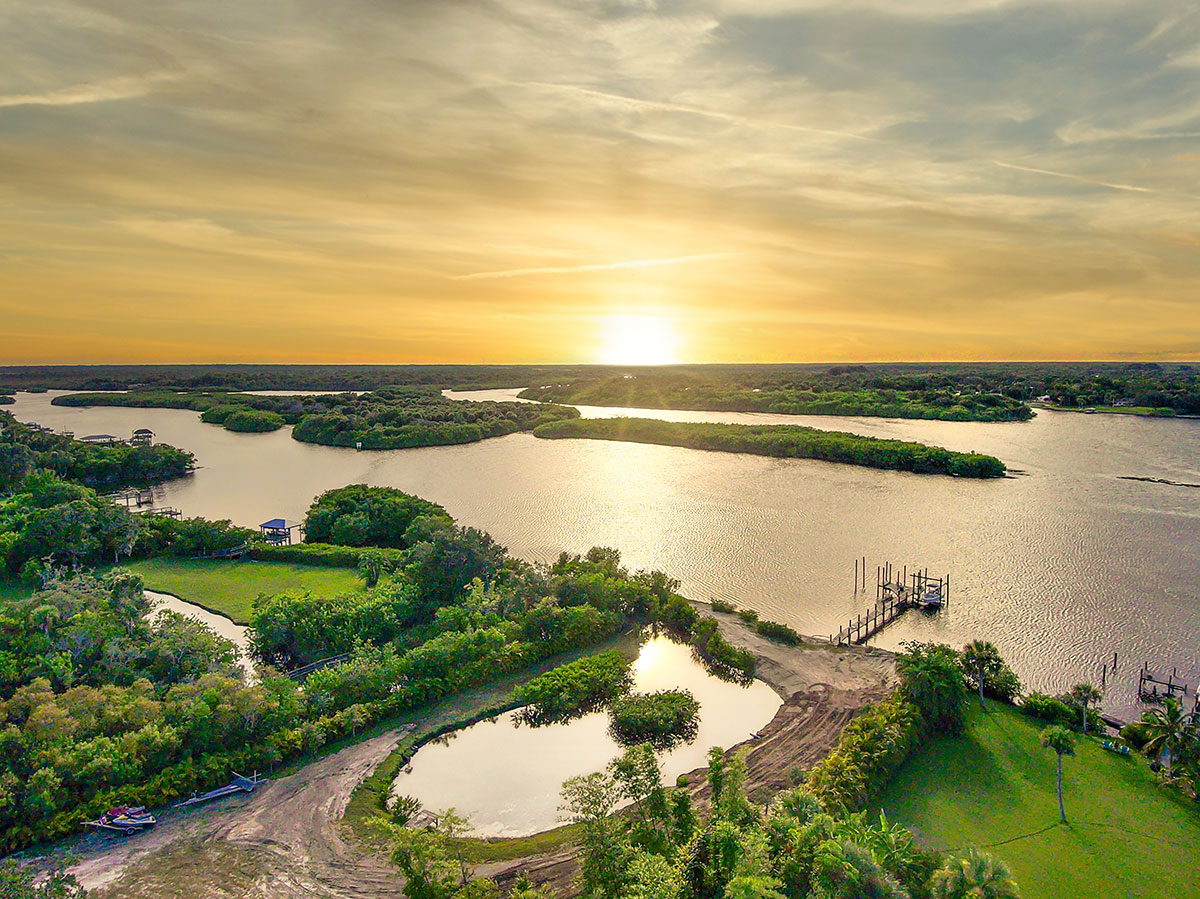
Little known Sebastian River bird sanctuary given rightful place on geographic maps
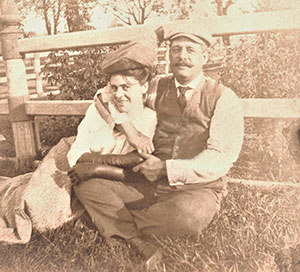
BY JANIE GOULD
A little-known island sanctuary for birds in Brevard County is finally getting some recognition, thanks to the efforts of a history researcher who learned about it recently, quite by accident.
Pam Cooper was doing research about the Roseland community just south of the Brevard County line, when she happened upon a mention of a 4.7-acre spit of land in the Sebastian River called Goodrich Island, which is owned by the Audubon Society of Florida.
Cooper learned that unlike the iconic Pelican Island bird preserve in the Indian River Lagoon, Goodrich Island used to be privately owned. It was part of a grand estate built near the river in the late 1920s by Connecticut residents James and Ella Goodrich.
Attracted to Roseland because of its abundance of birds, the couple first visited in 1919, the Orlando Sentinel newspaper noted in a 1966 report. They stayed at the Bay View Hotel on the north side of the river, which gave them a magnificent view of the waterway and of the land on the south side, where they would eventually build. The property they bought in 1925 included the 4.7-acre island. Ella Goodrich, described by the newspaper as an ardent conservationist, wanted to set the island aside as a wildlife preserve.
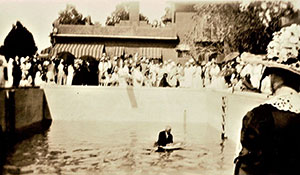
Their two-story house had a cellar as well as a “most inviting swimming pool,” the Press Journal noted on March 5, 1929. The pool, about 20 by 50 feet in size, was 10 feet deep and had a diving board with platform. Well water flowed into it from the mouths of four lion statues at each corner of the pool. The Goodriches allowed churches to use it for full-immersion baptisms.
The Rev. J.C. DuBose, founding pastor of First Baptist Church in Vero Beach, conducted at least one baptism there, the Press Journal reported on March 19, 1929.
“Immediately after services a candidate for baptism was immersed by Brother DuBose in the concrete swimming pool at Roseland, on the beautiful estate of Mr. and Mrs. James Goodrich,” the newspaper said.
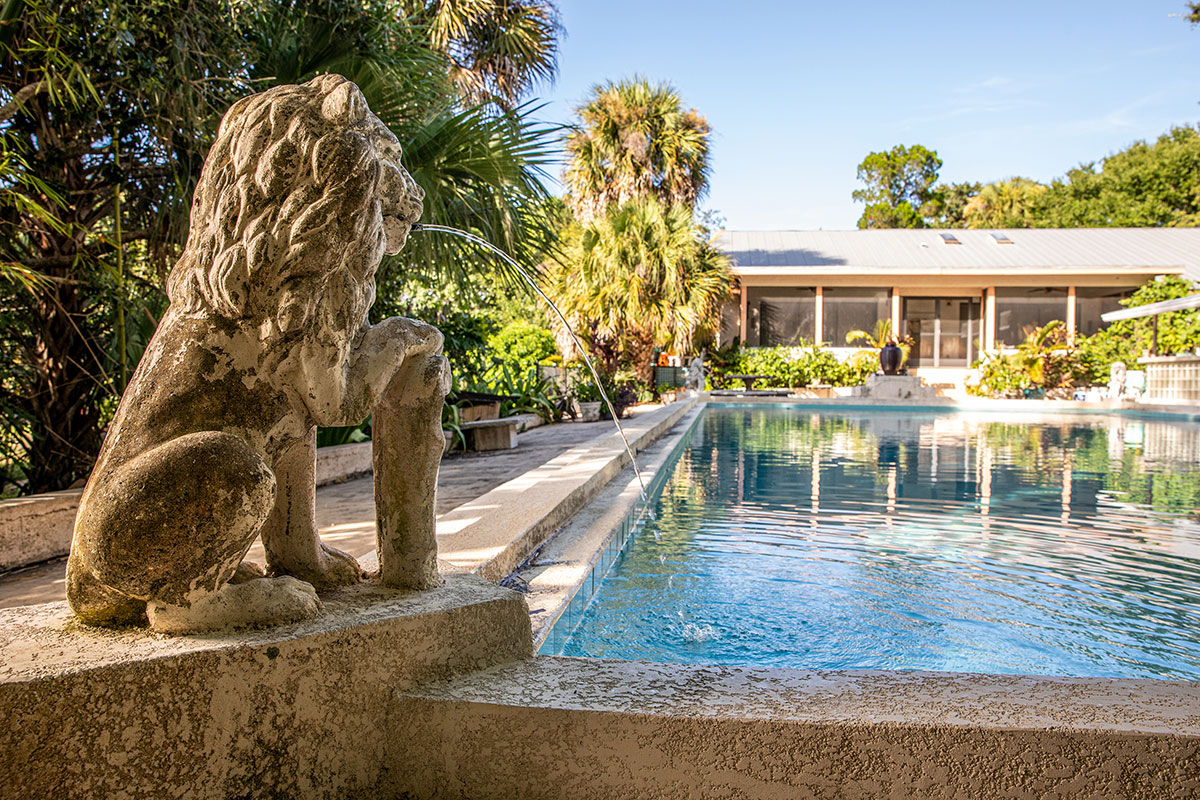
CIVIC MINDED
Ella Goodrich also immersed herself in civic activities, and by 1929 was president of the Roseland Women’s Club. The local newspaper also took note of that, reporting on May 7, 1929, that she gave an interesting account of the club’s activities: “the amounts raised and spent, and most interesting of all, the amount remaining in the treasury, being the magnificent sum of five cents. However, they are clear of all debt, and have their club insured for three years.”
James Goodrich died Oct. 10, 1929, at the age of 69, just two years after building the Florida house. His obituary in the Hartford Courant noted that he was a former state senator and head of the Hartford and New York Transportation Co. and of the Hartford Street Railway Co. His family had settled in Wethersfield, Connecticut, in the 17th century.
Ella continued to spend winters in Roseland, buying, in 1939, the old Sebastian Mercantile Co. building on North Main Street and continuing to enhance the family’s winter home.
“The Waldren Landscape Service is greatly improving the home of Mrs. James Goodrich,” the paper reported on May 10, 1940. “They are planting shrubs and flowers of all kinds and building a tennis court and a lily pond. Mrs. Goodrich will also have palm trees planted on the main streets of town as a gift to Roseland.”
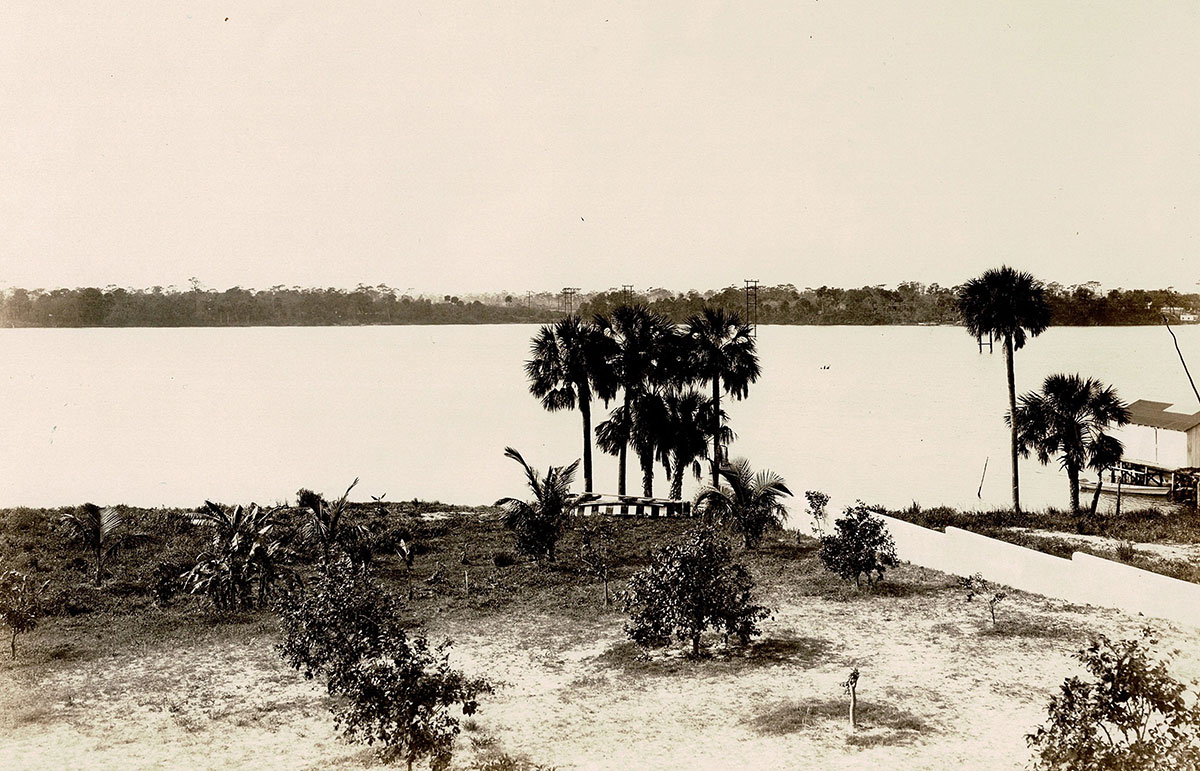
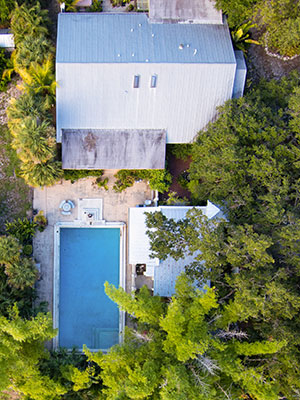
DOLPHINETTES PRACTICE POOL
Ella also opened her pool to Red Cross water safety classes in the late 1940s. Students who completed the instruction included Mildred Carter Bunnell, who later ran the Dolphinettes, a synchronized swim team that brought national attention to Vero Beach in the 1950s. The team of girls from Vero Beach High School performed at the Cypress Gardens attraction in Winter Haven, swam for a Red Cross benefit in Vero Beach and appeared on Jack Parr’s late-night TV talk show in New York City.
When Ella died in 1963 at the age of 91, the Hartford Courant noted she was a founder of the Women’s Association of Wethersfield and supported the Wethersfield Public Library through the Ella R. Goodrich Library Fund. She also was a past president of the American Legion Auxiliary in her Connecticut hometown.
Ella sold the Florida property, including the island, to her daughter, Mary Goodrich Jenson, in 1944. In the 1960s, members of the Roseland Garden Club were startled to learn that the Florida Flood Control District, precursor to today’s water management districts, planned to destroy the island by dumping spoil on it from a dredging project, the Orlando Sentinel reported.
Officials apparently didn’t realize the island was privately owned. Jenson acted quickly to protect the island by donating it to the Florida Audubon Society, which still owns it. Like Pelican Island, Goodrich Island is off limits to humans, who can view birds from boats or kayaks. Signs will be posted to mark the island as an Audubon-protected bird sanctuary.
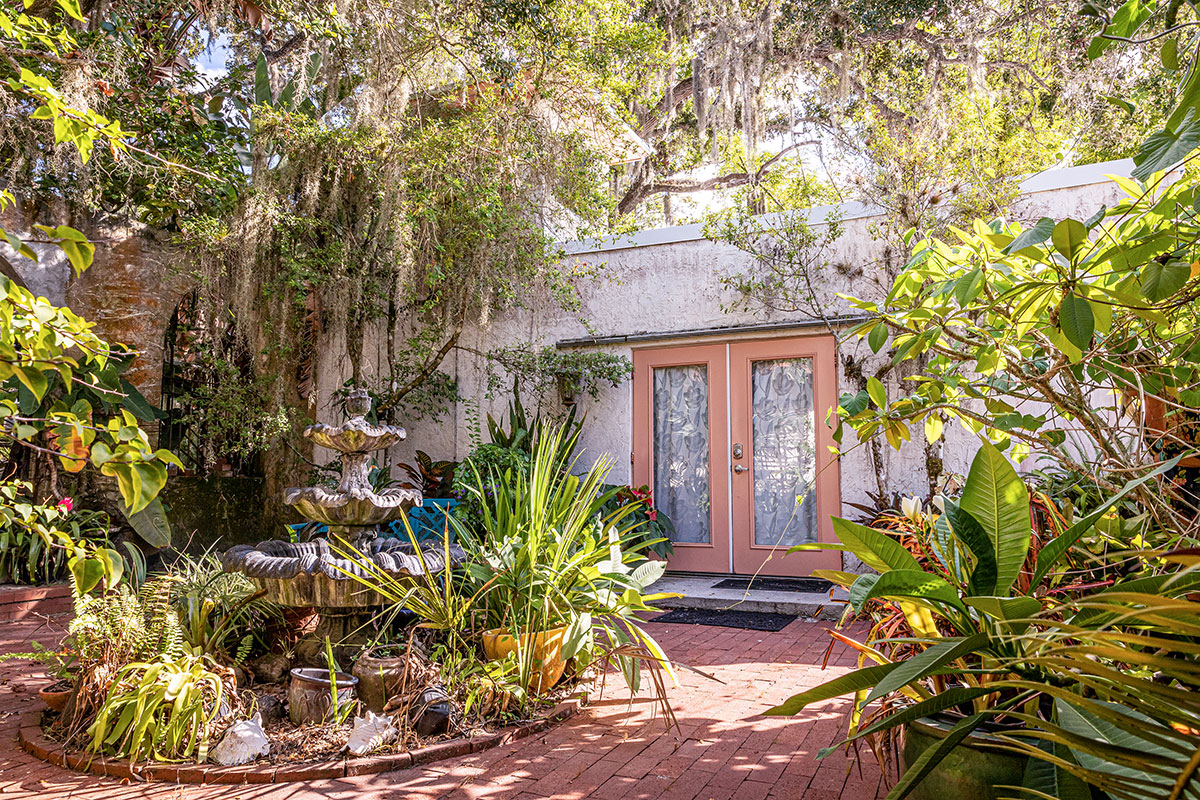
to the property. JASON HOOK
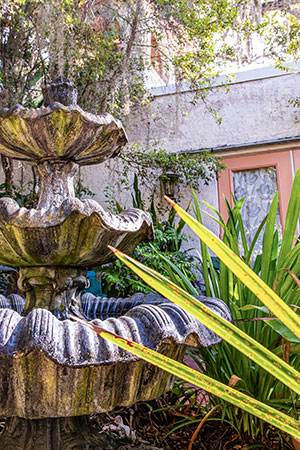
AVIATION, JOURNALISM PIONEER
Mary Goodrich Jenson, who died in 2004 at the age of 96, accomplished a great deal during her long life. In 1928 she became the first woman in Connecticut to earn a pilot’s license. She was the first woman to fly solo to Cuba, presumably from Florida, said William Goodrich III, her nephew two generations removed.
“I knew her well and loved all her stories,” Goodrich said. “Her license was signed by one of the Wright brothers. I saw it once. She was friends with Amelia Earhart and helped to start the 99ers [pilots], a group still active today. She also was the first woman hired as a byline writer for the Hartford Courant.”
She also became the Courant’s first aviation editor. In the 1930s, while employed by the Walt Disney Corp. in Southern California, she wrote the script for the original Dumbo movie and drafted the first treatment for what would much later become the movie Frozen. She was named to the Connecticut Women’s Hall of Fame in 1999.
“My favorite story she used to tell was when back in the 1920s she was writing for the Courant and flying around the Hartford area in her Fairchild plane, she would fly low by the family house on Jordan Lane and yell to the family that she’d be home for dinner soon,” Goodrich said. “It was an open cockpit plane, so I guess that was possible!”
Goodrich, 41, a businessman and entrepreneur in Boulder, Colorado, never knew his great-grandparents and hasn’t visited their old estate, which was sold before he was born.
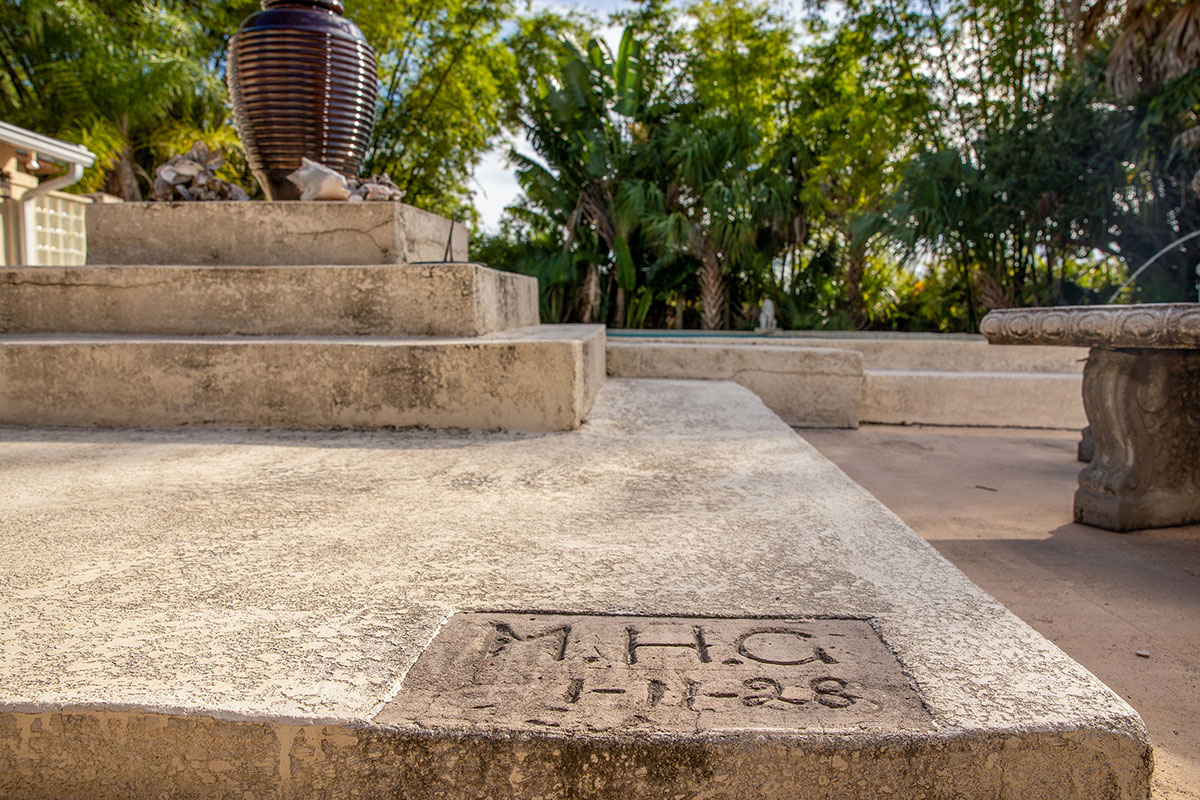
NEW OWNERS
The main house seen in early pictures no longer exists. It burned to the ground in the 1930s, though the exact date is unclear. A new iteration stands on the site and such features as the small bell tower made in Bolivia that looks like it could have been in the Hitchcock thriller, The Birds, were added. The pool’s filtration system was modernized and the diving board removed, though the four-level platform remains as a decorative touch.
In 2002, two men were riding around Sebastian with a friend, a real estate agent who was previewing properties for a client. They were visiting to get some respite from the urban stress of living in midtown Atlanta.
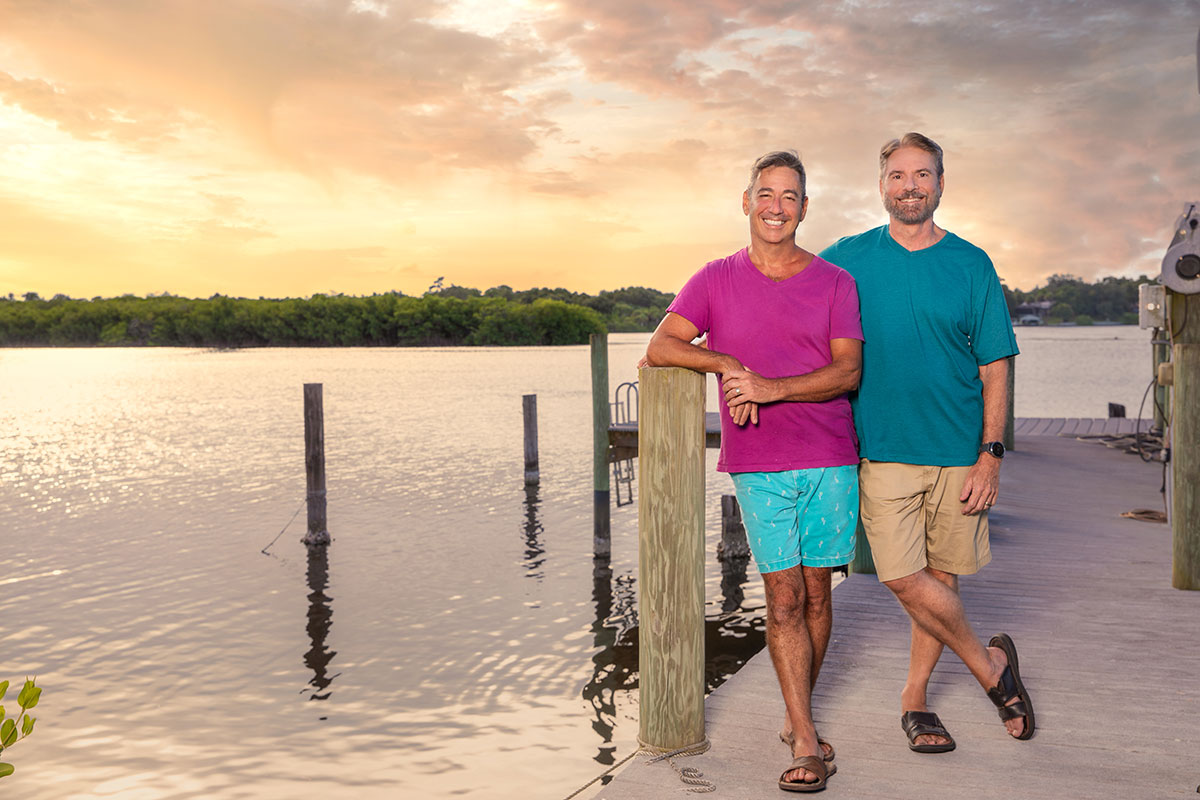
“We had visited several times before and never had any interest in living here,” said Glenn Powell, who owned a restaurant in Atlanta. “I thought Florida living was all high-rise condos in the Panhandle, touristy Orlando, or glitzy Miami Beach. Fine for others, but doesn’t appeal to me.
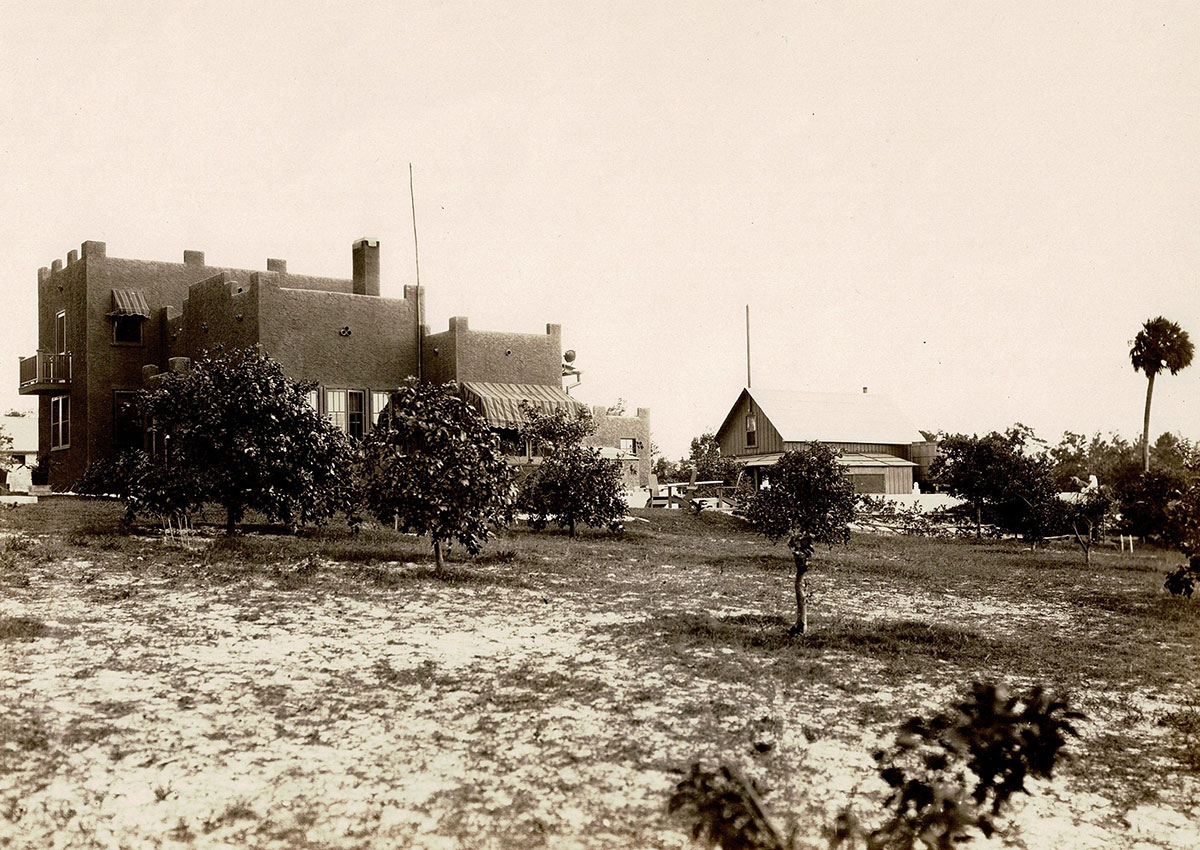
“We stumbled upon this for-sale-by-owner, poorly maintained 1980s riverfront home. The house itself wasn't much of a draw at the time, but once we stepped outside, oh my God! This huge Art Deco pool with lion fountains in each corner, surrounded by swaying bamboo and palm trees! The old-growth live oaks dripping with Spanish moss! The large expanse of a lawn leading to the river! I actually blurted out loud, ‘This is why I work so hard! We need to buy this.’ I knew right then that this was a unique property with remnants from a bygone era and with stories to tell.”
Powell’s partner, Scott Kimberley, an Atlanta native whose family settled in the city in the early 19th century, never thought he would live anywhere but Atlanta, until he saw the Roseland property.
“We didn’t realize how stressed we were living in the city,” he said. “This is the total opposite. I didn’t realize I was done with Atlanta until I saw this place.”
Kimberley works remotely as a data base administrator for Kaiser Permanente Atlanta, a company he has been with for 43 years. He says the only things he misses about Atlanta are friends and good restaurants.
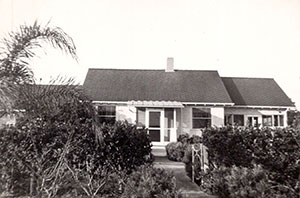
Now, he enjoys the quiet beauty of his natural surroundings. He sometimes paddles into the river in a kayak and has seen blue herons, ibis and brown and white pelicans on or near Goodrich Island. On land, near the house, two wooded areas he calls “jungle-ettes” border the wide lawn, functioning as wildlife corridors. They shelter raccoons, possums, owls, foxes and an occasional bobcat. A peacock outside the main house has become a pet that he feeds regularly. Any food left in the peacock’s bowl gets finished off by raccoons or possums.
Powell said while they were making arrangements to move to Florida permanently, they renovated the cabana guesthouse, which had been the original carriage house for the estate, to use as their vacation getaway during the transition. They started accepting short-term rentals of the cabana after several people asked to use it when it was vacant.
“We permanently moved into the big house a few years later while the cabana continues on as an offering for those who want to experience a secluded, historic Old Florida setting,” he said.
Powell and Kimberley have bought most of the original parcels of the Goodrich estate, including the guesthouse and six adjoining undeveloped lots. They are restoring the guesthouse to its original look with Dade County pine floors and beadboard walls and ceiling. The pool was restored in 2006 and looks like it did in the 1920s.
“We wanted to piece together the historic property as it was 100 years ago, but more important, guarantee no further development or encroachment,” Powell said.
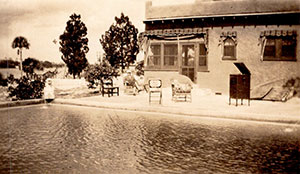
ON THE MAP
Goodrich Island never appeared on a map until Pam Cooper dug into its history and established that it is owned by the Audubon Society of Florida. She and Bill Goodrich were able to get it listed in the U.S. Geological Survey and placed on Google Maps.
“Now we have it on the map,” she said. “Two weeks ago it wasn’t on any map.”
Goodrich hopes to visit his great-grandparents’ old estate one of these days.
“I’m really eager to make a trip out there soon to see the area, hopefully swim in the old pool, and definitely take a kayak out to and around the island,” he said.
He’ll also be able to see Jenson’s initials, MHG, and the date 1-11-28, set in concrete on the diving board platform of the pool she enjoyed so long ago.
See the original article in print publication
May 2023
